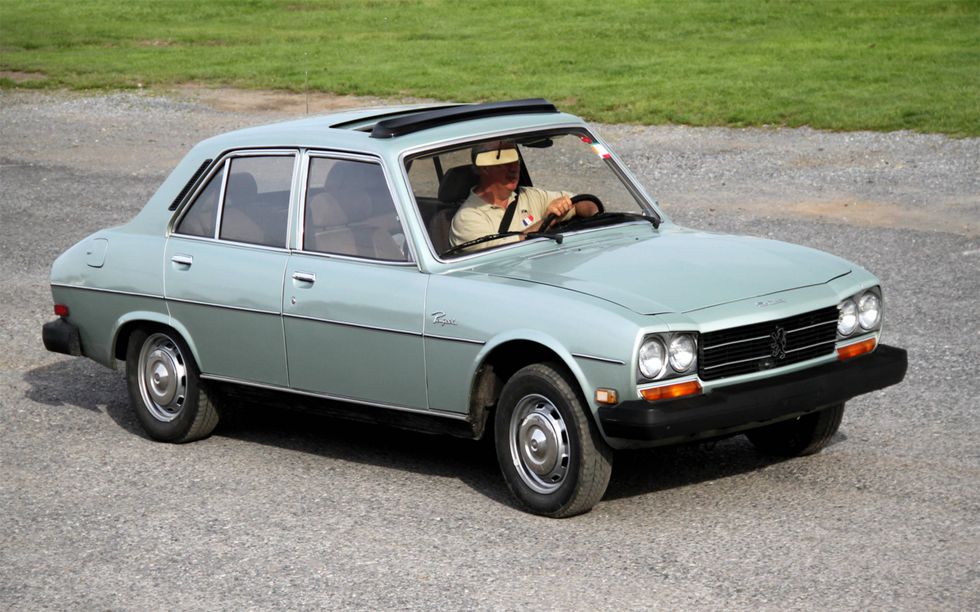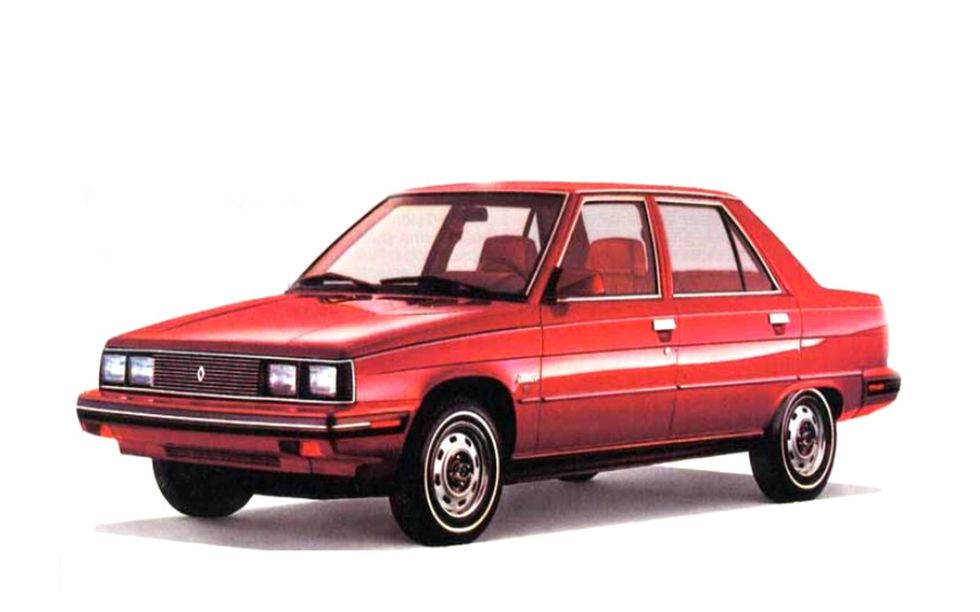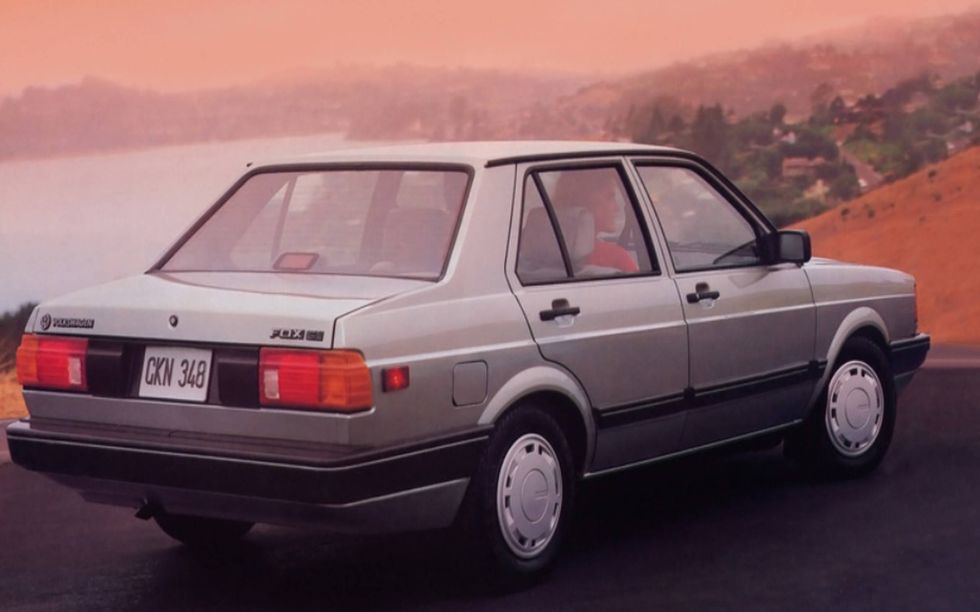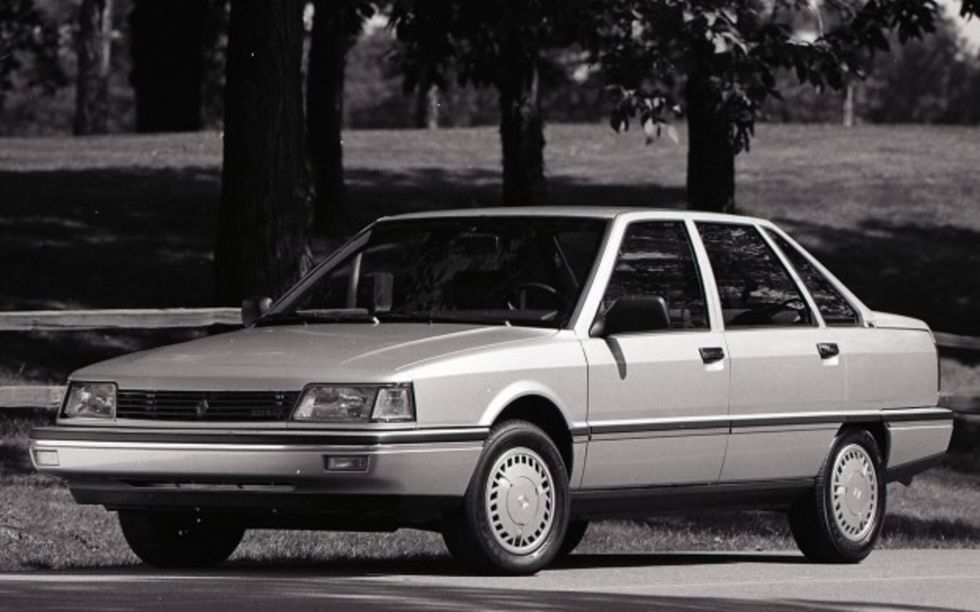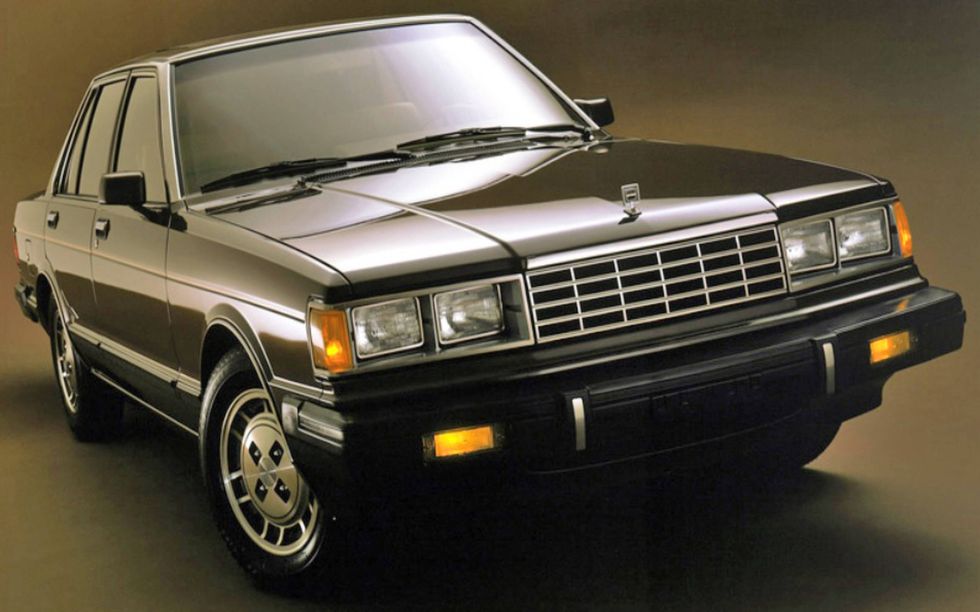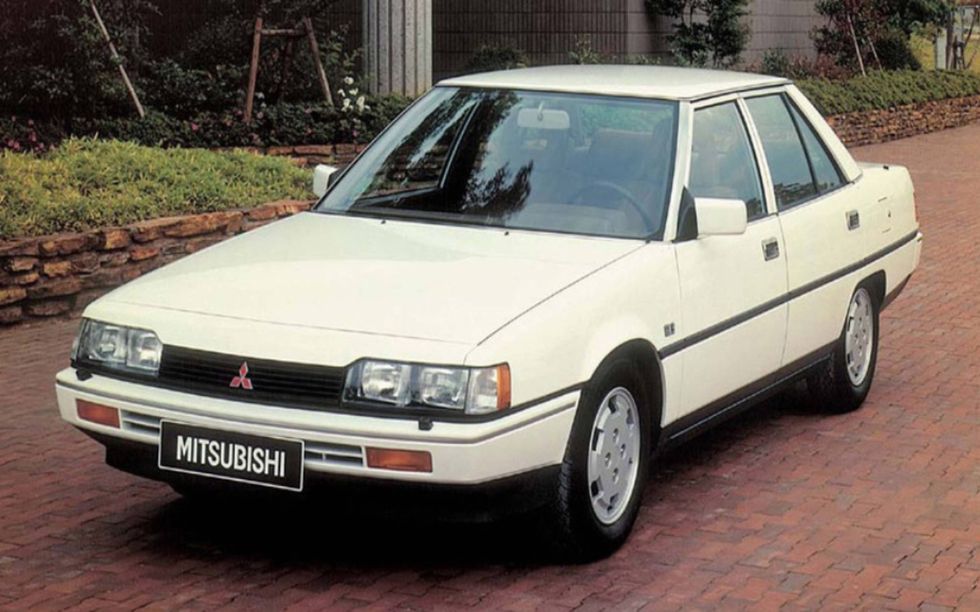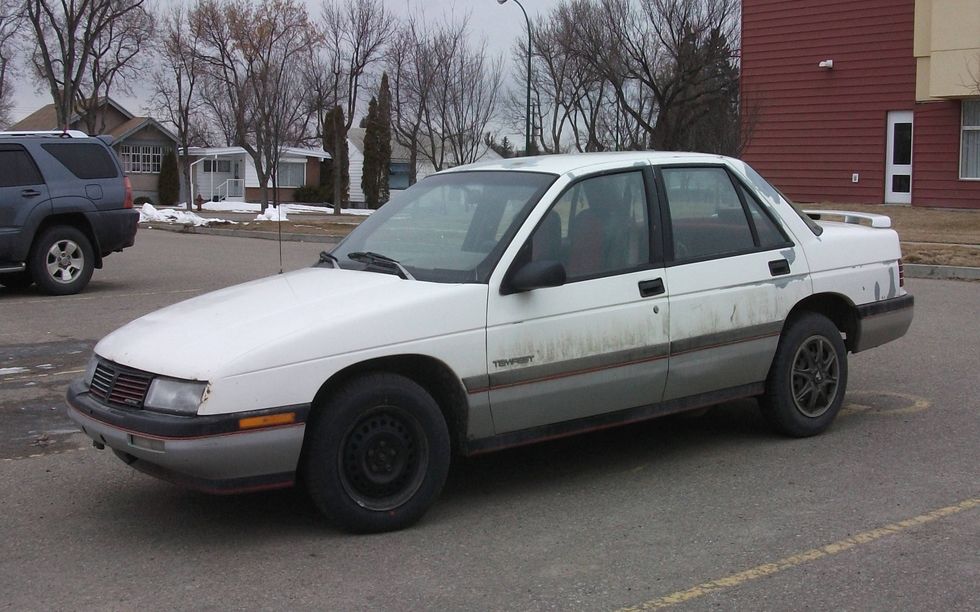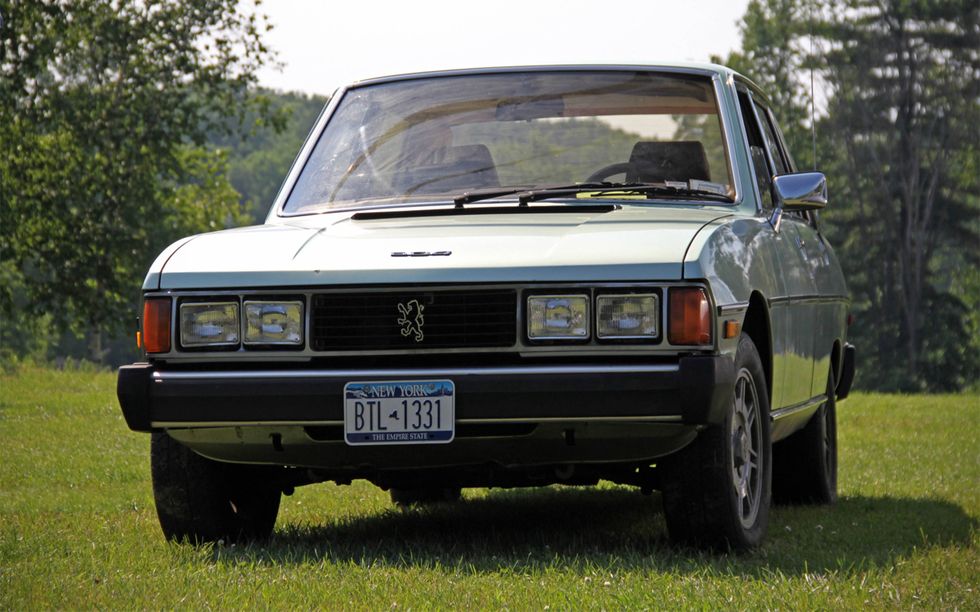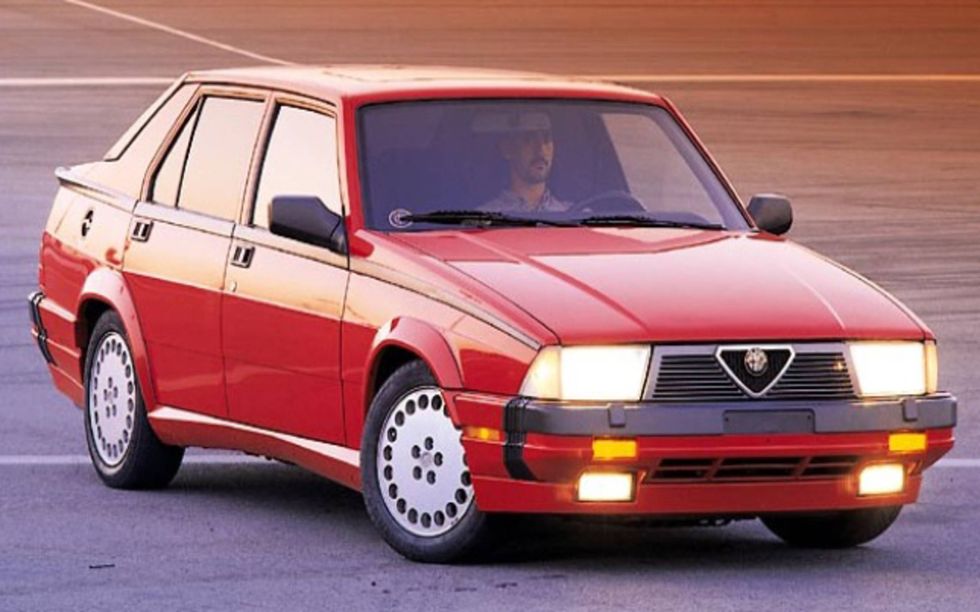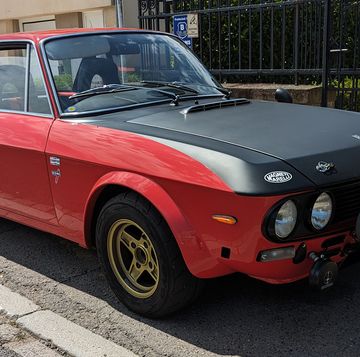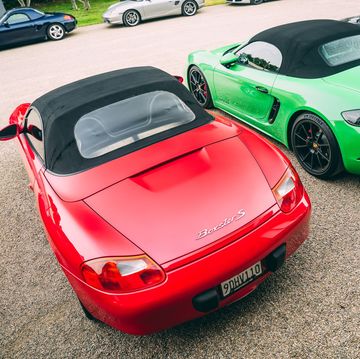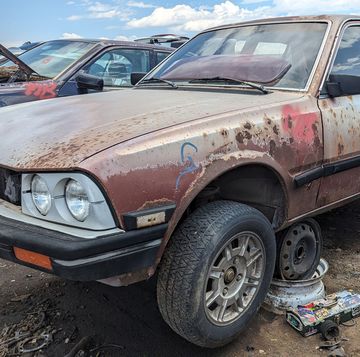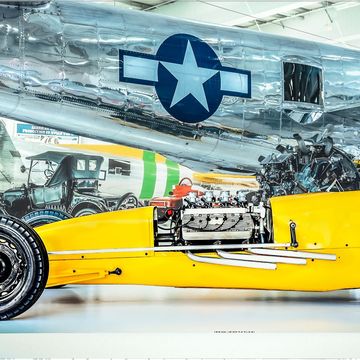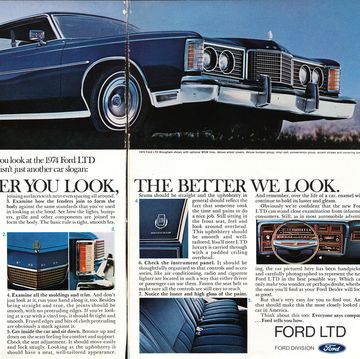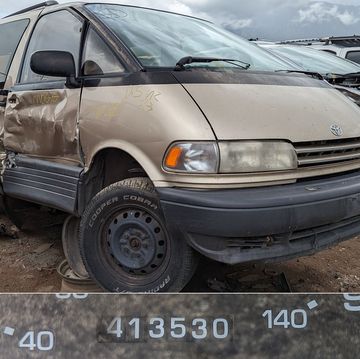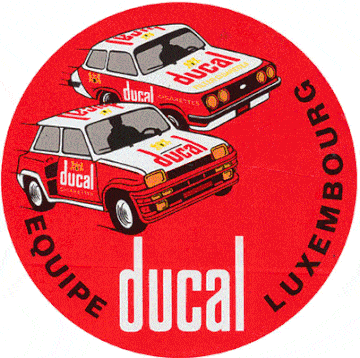The 1980s started with "Morning Again in America," and ended with Gordon Gekko; somewhere in between we went from Malaise-era leftovers to actual working cell phones. The automotive world finally received all those diesels that we could have really used during the Oil Crisis days -- better late than never -- and we got awesome supercars that we still can't afford today. No matter, there were great cars out there for every budget, and for once they weren't completely choked by the bolt-on smog equipment. Some of them are still around, and others disappeared seemingly overnight. For instance, what happened to Sterling? Have you seen one lately?
Here are 10 once-common sedans whose numbers either dwindled down gradually, or were pulled into some kind of spatial rift once their warranty ran out.
Isuzu I-Mark
Years before Apple rolled out its naming scheme, Isuzu had already hit the jackpot with the I-Mark sedan. The Isuzu I-Mark was the North American version of the Gemini. And amazingly, you could also have the same car as a Chevrolet Spectrum or a Geo Spectrum. In Canada, you could also buy this as a Pontiac Sunburst, but we already know that in Canada you could buy a Pontiac-branded version of just about every moderately priced global GM car—choosing one under its original marque was a sign of good taste and culture. Pokey 1.5-liter and 1.6-liter powerplants were on the menu, though the range-topping version of the I-Mark offered a turbo, raising output to a sprightly 125 hp. Isuzu-badged models, offering more upscale equipment, are perhaps the toughest to find of the U.S.-market Gemini offshoots simply because there were fewer of them to begin with. But surprise us with an iPhone photo of a Chevy version of this car sometime -- we'll retweet it.
Last seen: Estate sale in Tacoma, Washington.
Stereo cassettes in the center console: Culture Club, Van Halen.
Work needed: New tires, new brakes, wiring issues.
Items found in the glovebox: Sonic coupon for free chili dog, TV Guide with William Shatner on the cover, moldy orange peels that mice have been eating.
Interior smell: French fries.
Nickname Grandma gave it: Marky Mark.
Peugeot 504
There was a time when 504s served as taxis in New York City, something that people started remembering only when sifting through old photos or noticing them in TV footage of the time. But before the arrival of the 505, the 504 was Peugeot's main seller in the U.S. Offered in sedan and station wagon form, the 504 was also fitted with dorky DOT sealed-beams and bumpers at no extra cost, and was powered by a range of small-displacement gas and diesel engines, with the 2.7-liter V6 being the top unit. Sales of the 504 took a modest hit when the 505 was rolled out, but Peugeot kept the car in production through the 1983 model year because it was still selling well. Remaining stateside examples are thought to number around just 40 cars.
Last seen: Bring a Trailer, years ago.
Stereo cassettes in the center console: Tears for Fears, Phil Collins.
Work needed: Nothing. Everything works.
Items found in the glovebox: Owner's manual, service book, original window sticker.
Interior smell: Diesel exhaust.
Nickname Grandma gave it: Frenchie.
Renault Alliance
Named for the AMC Renault alliance, after the merger of non-equals, the Alliance was introduced for the 1983 model year and was built in Kenosha, Wisconsin. Available in sedan, coupe, and convertible form, the Alliance combined boxy styling with Renault 9 and Renault 11 underpinnings. A trio of engines ranging from a 1.4-liter inline-four to a 2.0-liter inline-four for the range-topping model provided the power, though none of the engines broke through the 100-hp barrier. Sales were strong, but the dealer experience was not lauded -- the Jeep dealerships that often sold these were reportedly less than enthusiastic about actually foisting them upon customers. It is now estimated that fewer than 30 sedans remain in running condition, most of them in Wisconsin, but there are more cabrios out there.
Last seen: Milwaukee, Wisc.
Stereo cassettes in the center console: Cyndi Lauper, Bon Jovi.
Work needed: Exhaust, interior's falling apart, A/C "needs a recharge."
Items found in the glovebox: Ticket stub from "Mystic Pizza," Swiss Army knife, $82 in City of Kenosha, Wisc., parking tickets.
Interior smell: Mildew and paper.
Nickname Grandma gave it: Appliance (that's harsh, but it rhymes).
Volkswagen Fox
Seemingly here one day and gone the next, the Volkswagen Fox is that car people confuse with an old Jetta. There was once a time you could have a Fox in coupe, wagon, and sedan form in the States. Built in Brazil for the North American market, the Volkswagen Fox sported a very spartan interior and a dated exterior design, with power coming courtesy of a 1.8-liter inline-four producing all of 81 hp. Luxuries such as automatic transmissions stayed off the options list -- you just couldn't get one. Money was saved in production just about everywhere inside and out, and you had to upgrade to higher trim levels (which were still coupled with the same engine) for things like body-colored bumpers.
Last seen: Sitting behind that lumber warehouse that closed down.
Stereo cassettes in the center console: Daryl Hall and John Oates, Vangelis.
Work needed: Won't start, doors sagging, A/C "needs a recharge."
Items found in the glovebox: Map of Snoqualmie Falls, Wash., Star Wars novel, Canadian coins.
Interior smell: Cedar.
Nickname Grandma gave it: Foxy.
Renault Medallion
The Medallion took over for the Renault Alliance and the aging Renault 18 just as the AMC-Renault marriage was coming apart, and managed to get into production in the midst of Chrysler's takeover of AMC. The Medallion was a rebadged version of the European Renault 21, but unlike the Alliance it wasn't built in Kenosha -- rather it was "fabrique en France." The sedan and wagon duo debuted in late 1986 as Renaults, but in 1987 they were rebadged as Eagles, hence the tremendous rarity of the Renault-badged versions. Its American-branded successor didn't do well either, and Chrysler dealerships were stuck with plenty of cars on their lots wearing Renault and Eagle badges that the salespeople wanted to see gone, but couldn't figure out how to talk someone into buying. Estimates for remaining examples in running condition are between 10 and 20.
Last seen: Sitting behind a gas station that went out of business.
Stereo cassettes in the center console: The Bangles, Kim Wilde.
Work needed: Won't start, paint on hood is peeling off, mildew damage.
Items found in the glovebox: Unidentified button from somewhere in the interior, screws from when owner tried to fix something underhood and then had parts left over.
Interior smell: Mold.
Nickname Grandma gave it: Stallion.
Datsun Maxima
That's right—the Maxima we all know started out life as a Datsun, including models meant for the U.S. market. A successor to the Datsun 810, the Maxima debuted for the 1981 model year offering a 2.4-liter inline-six gas engine and a 2.8-liter diesel inline six (until that model was chased out with most other diesels in 1983). During the 1984 model year, Nissan badges were added to the car for a little extra cachet since the Datsun brand was being phased out.
Last seen: Montgomery Ward parking lot.
Stereo cassettes in the center console: John Denver, Johnny Cash.
Work needed: Cracked windshield, left rear door won't open, smokes a bit.
Items found in the glovebox: Fossilized Wrigley's gum, three City of Schenectady parking tickets, Ewok action figure.
Interior smell: Dust with a hint of motor oil.
Nickname Grandma gave it: Brownie.
Mitsubishi Galant
Before the sixth-generation Galant was introduced for the 1988 model year, the U.S. received a preview of things to come in the form of the boxy Galant sedan in 1985. The sedan started things off by kicking sand into Germany's face. "The new Galant. If it wasn't so reliable, you'd think it came from Germany," the ad copy boasted. The Galant offered a computer-controlled suspension system as well as speed-sensitive electronically controlled power steering, both rather advanced features for the day. The design was unapologetically JDM, with sharp surfaces, rectangular details, incredibly slabby sides, and massive front and rear overhangs that weren't really shown off in period literature. To make things more awkward, parts bin rectangular side markers were added to the rear quarter panels. About the only thing that was missing for that extra JDM look were mirrors mounted on the front fenders.
Last seen: Service Merchandise parking lot.
Stereo cassettes in the center console: REO Speedwagon, Kim Carnes.
Work needed: Leaking oil, taillight bulbs need replacing.
Items found in the glovebox: Barbecue sauce packet, plastic spoon.
Interior smell: Newspapers, orange peels.
Nickname Grandma gave it: Gallant.
Pontiac Tempest
Yes, this is some parallel-universe Pontiac, and that parallel universe is called Canada. A rebadged version of the still-ubiquitous Chevrolet Corsica, the Tempest nameplate was reintroduced for the 1987 model year after a 17-year absence. Just about everything carried over from the Corsica, with the exception of the grille and tail lights, which were superficially different enough to make the car look interesting to visiting U.S. tourists while reminding them of their first cars from the 1960s. 1991 was the last model year for this experiment under the Pontiac badge. Just about all of these are importable, if you want to surprise everyone at the next big GM classic meet.
Last seen: Vancouver, British Columbia.
Stereo cassettes in the center console: Foreigner, Whitney Houston.
Work needed: Interior is falling apart, window switches won't work, exhaust is loud.
Items found in the glovebox: GM Canada service book, hard candy eaten by field mice (how did they get in? The doors were locked!).
Interior smell: Moldy carpets.
Nickname Grandma gave it: Dentist.
Peugeot 604
The Sochaux-based automaker rolled out its range-topping sedan in 1975, an event that went largely unnoticed in North America. Offering a distinctively different take on luxury than the Citroen CX, the somewhat-brutal 604 was designed by Pininfarina. Sales in the U.S. started for the 1977 model year, but not before the 604 received front and rear bumpers that were nothing short of epic, even by the standards of other DOT-mandated bumpers. While this extra length allowed the 604 to compete more favorably with American barges, the DOT-spec transformation made it a tough sell. Its high price didn't help. Stateside Peugeot dealers tried to avoid stocking a lot of these, and the debut of the 505 sedan made buying a 604 a tough proposition given how much more nimble, relatively speaking, the 505 was. The 604s were offered with 2.7-liter and 2.8-liter V6 engines, the famous PRV V6s, though a turbodiesel was also on the menu. Fewer than 20 are believed to be in running condition in the U.S. now.
Last seen: Upstate New York.
Stereo cassettes in the center console: Peter Gabriel, Berlin.
Work needed: Gasket, transmission.
Items found in the glovebox: Wiring diagram, unidentifiable wires, bendable LED light, pliers.
Interior smell: Oil.
Nickname Grandma gave it: Pujo.
Alfa Romeo Milano
There was a time when the Alfa Romeo Milano, or the 75 as it was known in its home market, was a somewhat common sight... in major cities on the two coasts. This sedan was already difficult to spot by the mid 1990s. The Milano sport sedan combined brilliant handling and an entertaining exterior design with less-than-brilliant electrics, and Alfa Romeo's departure from the States in 1995 made it difficult to keep these running. The Milano Verde with the 3.0-liter V6 and the phone-dial alloys is the most-sought after model out of a truncated range of engines that were offered in the U.S. and Canada, but other markets received even diesel versions. The Milano should have sold better by just about every metric, but arriving on the scene just as the economy started tanking sent sales into a tailspin.
Last seen: At Italian classic car shows everywhere.
Stereo cassettes in the center console: Air Supply, Men at Work.
Work needed: Fuses, broken switchgear, gearbox issues.
Items found in the glovebox: Fuses, two screwdrivers, "Beetlejuice" movie ticket, some kind of rubber belt from the engine bay, engine schematics.
Interior smell: Gasoline.
Nickname Grandma gave it: Flavio.

Jay Ramey grew up around very strange European cars, and instead of seeking out something reliable and comfortable for his own personal use he has been drawn to the more adventurous side of the dependability spectrum. Despite being followed around by French cars for the past decade, he has somehow been able to avoid Citroën ownership, judging them too commonplace, and is currently looking at cars from the former Czechoslovakia. Jay has been with Autoweek since 2013.


